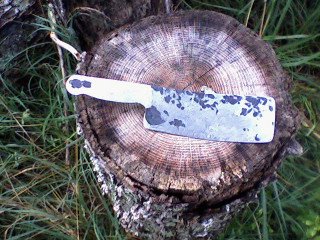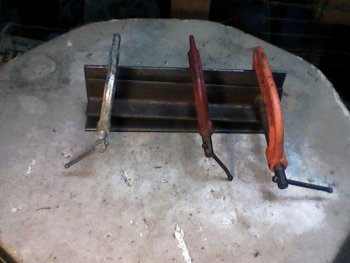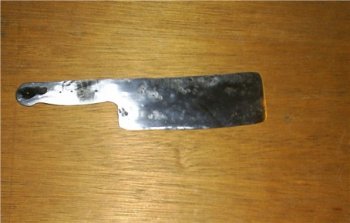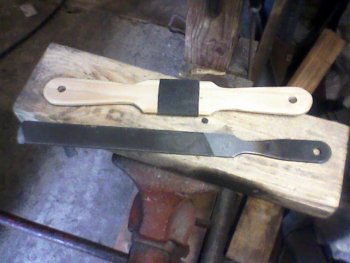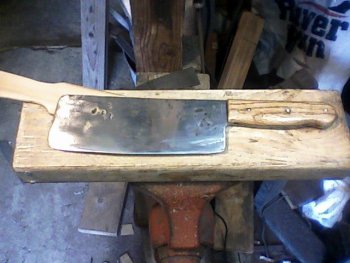Eddie Mullins
Well-Known Member
I wanted to make a knife the family could use so decided to make a knife for the kitchen. I wanted something that could be used for chopping and wide enough to be useful for scooping things off the cutting board. So I sketched what I'm calling a chopper, I don't know if there is a proper name for it.
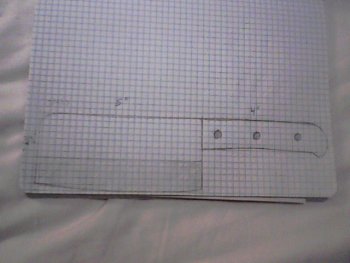
I cut out a cardboard template and then took my best guess on the size of the leaf spring piece I would need to make it. I thought it would be better to be a little over sized than under.
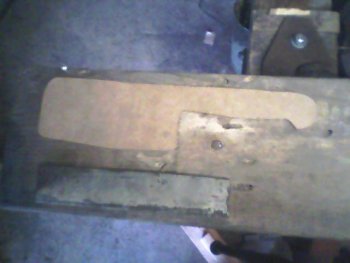

Then I forged to shape. It ended up slightly larger than my original template.
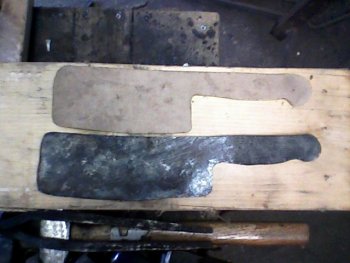
I want to leave some appearance of the forging process when when finished with this knife, so I purposefully used a rounding hammer to leave some minor indentations. This is after an initial pass with files. I still have a little more to go, then heat treat.
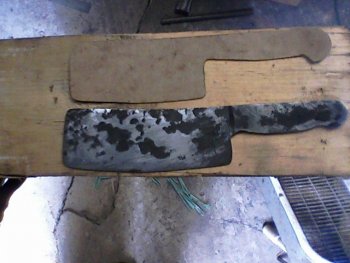

I cut out a cardboard template and then took my best guess on the size of the leaf spring piece I would need to make it. I thought it would be better to be a little over sized than under.


Then I forged to shape. It ended up slightly larger than my original template.

I want to leave some appearance of the forging process when when finished with this knife, so I purposefully used a rounding hammer to leave some minor indentations. This is after an initial pass with files. I still have a little more to go, then heat treat.



